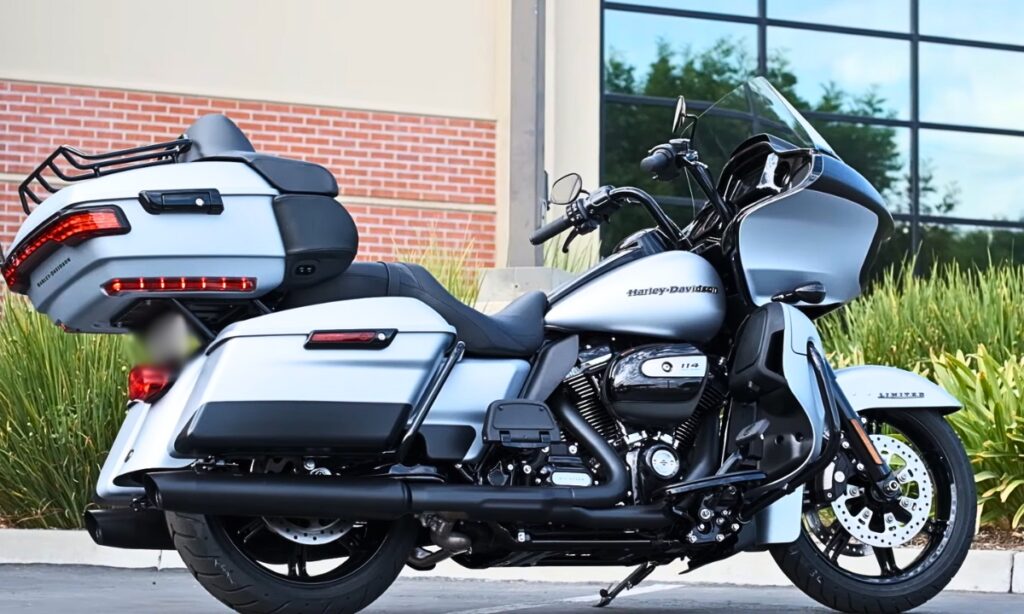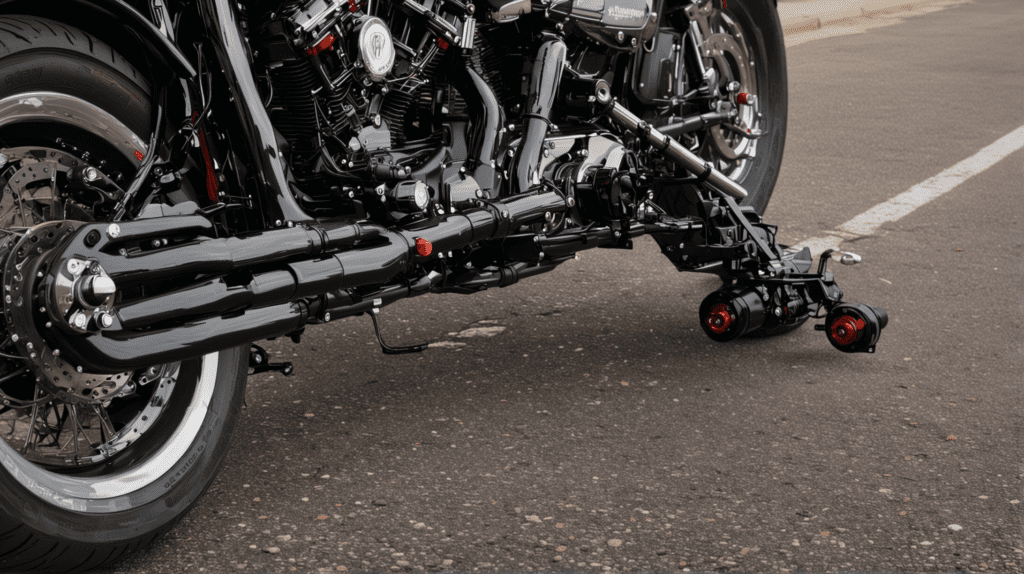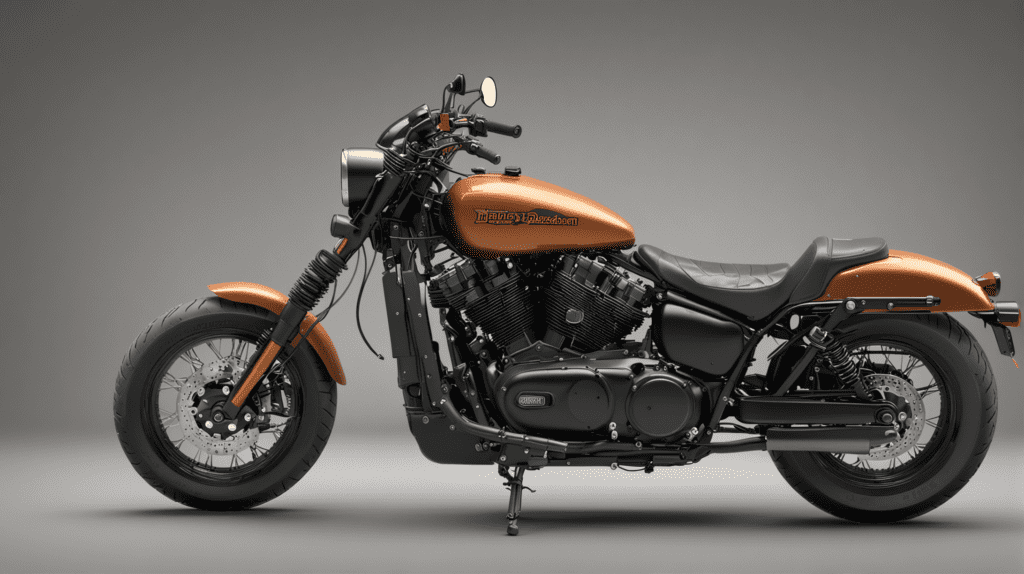The Reflex Defensive Rider Systems (RDRS) on Harley-Davidson motorcycles is a cutting-edge technology aimed at enhancing rider safety and control.
However, like any novel technology, it is not without its share of problems.
In this article, we will explore and analyze various issues users have reported with the Harley RDRS and their solutions.
Harley RDRS Problems
Some riders have reported experiencing difficulties with the system’s stability control and anti-lock brakes, while others point to issues with the traction control feature.
These problems, although not universal, have raised concerns over the efficacy and reliability of the RDRS.

What Is The RDRS System?
The Reflex Defensive Rider Systems (RDRS) is a safety technology package designed by Harley to enhance rider control during adverse road conditions and emergency situations.
This state-of-the-art system is made up of several components working in harmony, including C-ABS, C-TCS, DSCS, VHC, and TPMS.
C-ABS monitors input from wheel speed sensors and modulates brake pressure to prevent wheel lockup during cornering.
C-TCS detects rear-wheel slip to maintain traction during cornering, while DSCS manages engine torque to minimize rear-wheel slip during abrupt deceleration events.
VHC applies and holds brake pressure when activated, preventing the motorcycle from rolling after it has been stopped on an incline.
Lastly, TPMS monitors tire pressure and alerts the rider of low tire pressure.
Together, these systems form the RDRS, optimally designed to enhance the rider’s control and security while driving a Harley-Davidson motorcycle.
1. VHC Issues
Vehicle Health Check (VHC) issues are prevalent concerns among motorcycle owners who use the Reflex Defensive Rider Systems (RDRS).
One of the common issues is the unexpected activation of the system, even in normal riding conditions.
This can lead to confusion and could potentially affect the rider’s control of the motorcycle. This is often caused by faulty sensors that mistakenly interpret normal situations as hazardous.
Another potential issue with the VHC is the deactivation of the system without any warning.
This usually results from software glitches or electrical faults, leaving the rider without the added layer of safety.
To troubleshoot these issues, begin by resetting the system. Turn off your bike, wait a few moments, and then restart it.
If the problem persists, check the motorcycle’s diagnostic system for any error codes. This could indicate a specific issue with one of the sensors.
If the issue still remains unresolved, it’s advisable to reach out to a licensed Harley technician.
They possess the necessary equipment and expertise to handle complex RDRS issues.
2. Traction Control Malfunctions
Traction Control Systems (TCS), part of the RDRS, play a crucial role in enhancing stability by preventing wheel slip.
However, they occasionally malfunction, undermining the safety and performance of the bike.
In case of TCS malfunctions, you may notice symptoms such as the TCS light remaining on and the system failing to engage even when conditions necessitate it.
These issues could stem from a variety of sources, such as sensor failures, software glitches, or wiring problems.
To troubleshoot this issue, start by checking the integrity of the wiring harness for any visible damage or loose connections.
Confirm that the wheel speed sensors are clean and functioning correctly; these are fundamental to the operation of the TCS.
If these steps don’t resolve the issue, consider using a diagnostic tool to read any stored fault codes.
These codes can give you specific information about what’s wrong with the TCS.
Lastly, you should ensure your bike’s software is up-to-date. Outdated software may lead to malfunctions in the TCS and other components of the RDRS.
3. Anti-Lock Brakes Issue
The Anti-Lock Braking System (ABS) is a critical component of Harley-Davidson’s RDRS.
However, some riders have reported issues with this feature, which potentially compromise riders’ safety if not addressed properly.
The ABS works to prevent the wheels from locking up or skidding during braking.
This is achieved by automatically modulating brake pressure in response to changes in road surface or rider input.
However, if the system detects a wheel is about to lock up, it reduces brake pressure to that wheel, then increases it again once the wheel regains traction.
Issues with the ABS can result in the ABS light staying on or the brakes failing to respond as expected during an emergency stop.
These problems could stem from a variety of causes, from a malfunctioning wheel speed sensor to issues within the ABS module itself.
To troubleshoot, start by checking the ABS light on your Harley. If it stays on even after the engine has started, it’s an indication that there’s an issue.
If you have a diagnostic tool at hand, use it to check for any fault codes, which will give you an indication of what specifically might be wrong.
If a wheel speed sensor is at fault, it will need to be replaced. If the issue lies within the ABS module, you may need to consult your local Harley dealership.
4. Complications at Bike Modifications
Modifying a bike, especially with the RDRS, can sometimes lead to complications that might affect the bike’s performance and safety.
One common problem is that modifications might interfere with the bike’s electronic systems.
However, changing the exhaust system might affect the efficiency of the fuel system, causing a decrease in performance or even damaging the engine.
Similarly, altering the bike’s weight distribution, such as adding saddlebags or a larger fuel tank, can affect the RDRS and its ability to keep the bike stable.
Another issue arises from installing aftermarket parts that are not compliant with the OEM specifications.
These might affect the bike’s handling or braking capabilities, leading to safety issues.
Furthermore, modifications such as changing the bike’s height or seat configuration can alter the bike’s centre of gravity.
This can impact handling and make the bike more difficult to control, particularly at high speeds.
Lastly, bike modifications often void the manufacturer’s warranty, leaving you to cover any repairs or damage resulting from the modifications.
To avoid these complications, always do your research thoroughly before modifying your bike.
Which Models Are Equipped With RDRS System?
The RDRS, or Reflex Defensive Rider System, is a technological advancement introduced by Harley-Davidson.
This system is designed to enhance rider confidence during unexpected situations or poor road conditions.
The RDRS features are standard on all Harley-Davidson Touring models of 2020 and later, including the Road King Special, Street Glide Special, and Road Glide Special.
These features also come equipped on the 2020 Harley-Davidson CVO and Trike models.
The RDRS system includes several interconnected features, such as C-ELB, C-ABS, DSCS, and VHC.
These features work in sync to provide an enhanced riding experience by ensuring optimal traction, control, and braking, particularly in cornering scenarios.

Tonmoy, the brains behind the influential motorcycle-focused website, TwoWheller.com, is a dedicated and passionate advocate for biking culture. Born and raised in a family of motorcycle enthusiasts, his love for two-wheeled transportation was ignited at an early age. His commitment to providing in-depth reviews and helpful tips for riders has established him as a respected figure in the motorcycle community.

